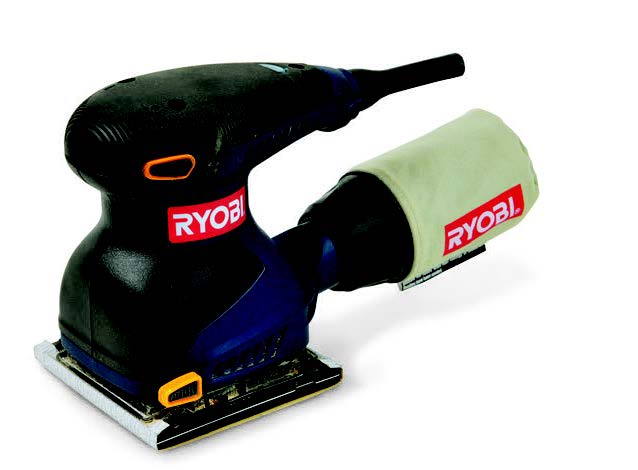
I’ll admit it. For years I have been mispronouncing their name. Turns out it’s pronounced “ree-oh-bee,” not “rye-oh-bee.” Granted, that makes very little difference in how well their tools work, but don’t you feel better knowing the right way to say their name? I do, and that was only one bit of misinformation that got cleared up during my conversation with Jason Swanson, the director of product development for Ryobi Power Tools. As it turns out, I was in for some very pleasant surprises about Ryobi. First, a bit of history.
Originally, Ryobi was a Japanese company started some 40 years ago as a die-casting firm that expanded its line to include tools. In 1999, the Ryobi brand was bought by Hong Kong based TTI ( Techtronic Industries Co. Ltd.), the OEM that had been supplying them with many of their cordless tools for some two decades. An OEM, or “original equipment manufacturer,” is a company that makes items sold under another brand name.
These days, TTI’s product names include Milwaukee®, AEG® and Ryobi® power tools and accessories, Ryobi and Homelite® outdoor power equipment, and Royal®, Dirt Devil®, Regina® and Vax® floor care appliances. TTI is a huge company that employs some 24,000 people; the Ryobi division alone has about 9,000 employees worldwide producing around 70 products, ranging from drill bit sets to table saws. They also make OEM products for Craftsman (Sears), and some of Home Depot’s RIDGID tool line. Though Ryobi tools are manufactured all over the world, including the United States, Asia and Europe, here in North America they are sold exclusively through Home Depot.
Not surprisingly, today’s Ryobi is a very different company than they once were. “At one time,” Swanson explained, “Ryobi tried to serve all market segments, a strategy that resulted in a somewhat spotty reputation. All that changed about eight years ago when we took a long, hard look at our product line. We decided to concentrate on the largest market segment, sell through the largest retailer (Home Depot), and aim toward bringing woodworkers tools with professional features at affordable prices.”
“Dollar for dollar, we offer more features and better performance than our competitors,” Jason told me. “Over 90 percent of the time, we exceed our customer’s expectations. We try to set the bar high. If a consumer expects a tool to last ten years, we design it to last 20. Typically, we are in the mid price point category. That means we try to hit a reasonable price with better products, better features and a better warranty. All of our tools, including batteries, now come with a two-year warranty and a 90-day satisfaction guarantee.”
Equally important is their devotion to constant improvement. “Ideas for new tools come from outside inventors, inside employee ideas, both internal and external focus groups, consumer feedback from online and real-time focus groups, job site interviews, in-store interviews and registration cards,” Swanson explained. “We also do followup from those customers who elect to allow us to pester them.
“These are very exciting times,” he continued. “With the Internet age, it is a lot easier to get information to our core audience, the DIY woodworker. In terms of product development, it means we get quicker feedback that we can use to target new products and improve current ones. It’s an information gathering resource that lets us craft the products our customers want.”
A good example of that is their new One Plus initiative, launched two years ago. “One Plus consists of one battery pack that works in all of our products. Everything is offered as an individual unit, or in cost-effective combo kits.” The idea is that you can buy a wide range of tools that share one battery, or buy reasonably priced replacement batteries.
“Up until two years ago, battery sales were relatively slow, and the feedback on registration cards often asked questions like ‘Why are batteries so expensive?’ and ‘Why must I buy another battery and charger just because I want to buy another tool?’ Batteries are only good for three to five years, but tools last much longer. Often, the price of a battery alone would dissuade people from buying replacements.”
“We dropped the retail price of an 18-volt battery from $60 to $25 dollars, or two for $40. At the same time, we separated the battery from the tool. If you already own one or more Ryobi tools with batteries, you can simply buy more tools and use the same batteries for them. That lets the woodworker buy a whole lot of tools with a relatively low initial investment. This strategy resulted in a substantial increase in battery sales as well as an increase in tools sold without batteries.” To top it off, the batteries also work in already existing tools. “The 18-volt battery we use today,” Jason pointed out, “also fits the first drill we sold in 1996.”
Currently, their best-selling products are cordless ones: drills, saws and, of course, batteries, which are sold both singly and in two-battery combo kits. Why cordless? “It’s all about convenience,” replied Swanson, though clearly, it is also about quite a few other traits. That came out when I asked him who he thought should be buying Ryobi tools.
“We feel that Ryobi should be the first choice for anyone seeking thoughtful design, quality, reliability, safety, and affordability.”
I guess that just about says it all.





